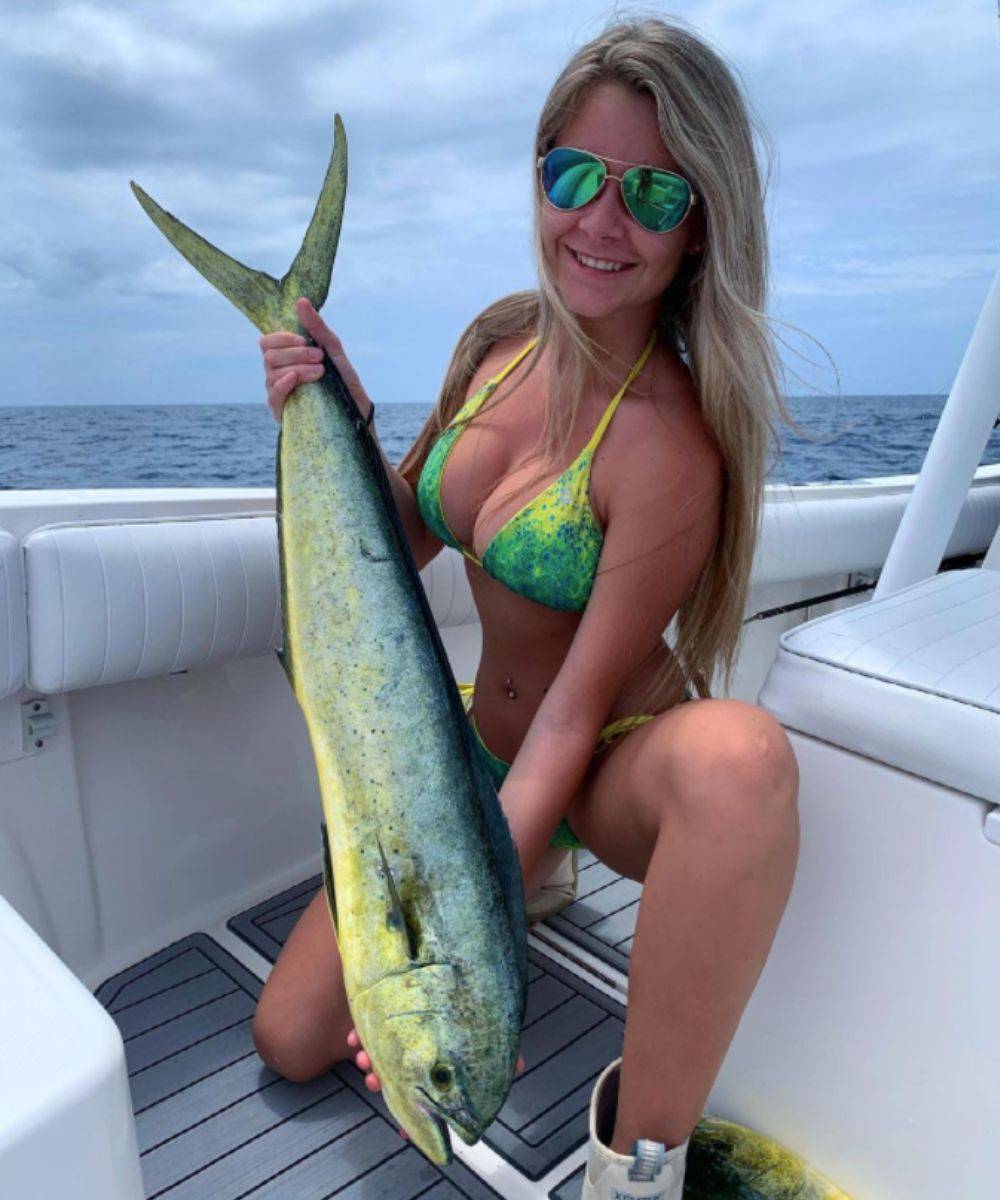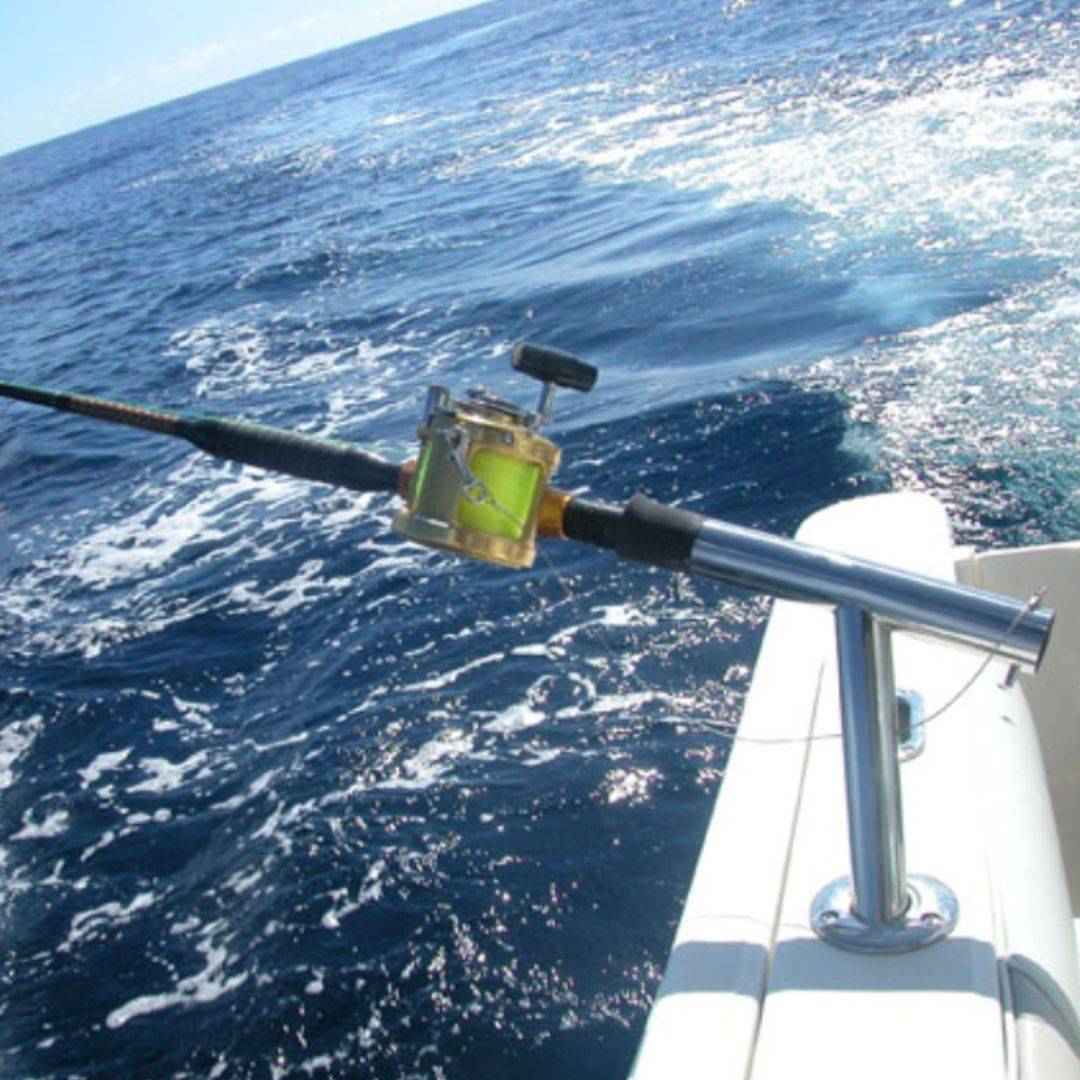Your Cart is Empty

Mahi Mahi, often regarded as one of the most coveted offshore species, attract anglers for several compelling reasons. Firstly, they venture relatively close to shore, making them accessible to anglers even with modest sized boats. Additionally, their widespread presence ensures accessibility to a broad range of fishing enthusiasts. Known for their voracious appetite, Mahi are opportunistic feeders, at times making them relatively easy to catch. Moreover, their delectable taste adds to their allure, offering anglers the promise of a satisfying meal after a successful day on the water.
Whether you're a seasoned angler looking to refine your techniques or a weekend warrior eager to explore offshore fishing, this guide promises to enhance your Mahi Mahi fishing experience. We delve into ten strategic approaches guaranteed to elevate your game. From decoding their behavior to optimizing your gear and mastering specialized techniques, each tip is tailored to empower you with the skills and insight necessary to reel in the trophy Mahi of your dreams.
Prepare to cast your line, feel the exhilarating splash of saltwater on your skin, and immerse yourself in the captivating world of Mahi Mahi fishing. Together, let's embark on this journey and unlock the secrets to mastering the art of catching one of the ocean's most prized game fish.
Mahi often travel in large schools. Be observant for signs that might indicate fish. Diving birds, flying fish or other baitfish, fish feeding at the surface should always be evaluated.
I cannot tell you the number of times I have seen something enroute to a “hot spot” only to return later and catch fish around what I observed.

Large schools of mahi can often be attracted to almost anything in the water. Weedlines and floating debris of any kind can hold fish. Be observant. If you are trolling, make sure to troll toward whatever you see and check it out.
The size of the debris often has little to do with how many fish might be around it. I recall a day we observed something floating in the water as we headed offshore. As we slowly approached, we realized it was a 4x8 sheet of plywood. There were Mahi under the plywood almost as far as you could see. That was a great day!
Be attentive to other boats in the area. Often a good weedline will attract boats as well as mahi. Be courteous, but often these weedlines are large and can accommodate several anglers.
Finding a well-organized weedline is exciting and may well lead to a great day of fishing. However, many times the grass may be scattered. Or what may have started as an organized weedlines turns scattered as sea or wind conditions change.
If you have ever trolled through scattered grass, it can be very frustrating. The problem is that is usually where the fish are! Instead of giving up and leaving, develop a strategy for fishing in scattered grass.
Because the grass is scattered there may be more ground to cover in order to locate fish and trolling may still be the best way to locate and catch fish. In these conditions consider reducing the number of lines being trolled and minimize the time spent clearing grass.

Another option is to consider a weedless trolling rig to minimize the frustration of clearing grass.
A final tactic is to stop trolling and drift among the scattered weeds. Bucktail jigs, soft swimbaits, and surface poppers can all be good choices. Mahi will usually be around the scattered grass and likely be attracted to the good if you are patient.
For a variety of reasons, I rarely take live bait with me when I head offshore. Live bait is most often my fall-back plan. That doesn’t mean it is not an effective strategy and can make for a great day.
As it relates to mahi fishing, use sabiki rigs to jig for live bait around bottom structure. Free line baits around floating debris or scattered grass using a live bait rig to attract curious dorado.
If mahi are on the agenda, make sure to select the right gear. Too often we want to use tackle that will catch anything in the ocean. This mindset can diminish the mahi experience and even impede catching mahi.
Consider using lighter gear. 30 lb test gear is plenty heavy when targeting mahi mahi. A braided mainline coupled with a 100 yd monofilament top-shot is a good choice. Join the mainline to the top-shot using an FG knot.
A medium duty spinning reel and rod makes for a great mahi combination. The versatility of a spinning reel allows it to be quickly changed over from trolling to casting to live bait fishing as opportunities present themselves.

Make sure to make the most of your boat regardless of its size. Outriggers prove to be a big advantage for larger boats. They allow baits to be trolled in clean water and present a wider spread.
Two relatively inexpensive options are available to help compensate if outriggers are not available.
One option is rod riggers. They fit standard rod holders and point the rod perpendicular to the boat. They are very effective at getting trolling baits into clean water. Most rod riggers include a lanyard to secure the rod. I have never had to rely on the lanyard, but I always use it.

The second option are directional spreader bars. These look like a traditional spreader bar but include a directional fin that pulls to spreader bar to either the port or starboard side of the boat.
Usually, directional spreader bars are offered in either 18” or 36” wide. My experience is that they develop a significant amount of drag and I prefer the 18” wide models. The 18” bars still have a lot of drag so expect to use a reel something like a Shimano TLD 25 or similar.
My preferred spread is the directional spreader bars in the long position on each side and the rod riggers in the short position. Depending on the number and experience of the crew, I may run a shotgun way back down the center. Rarely do I run more lines than this.
There are days when how you fish for mahi won’t matter. As mentioned, mahi are voracious eaters. They can eat as much as 20% of their body weight each day. On those days, it feels like you could troll an aluminum can and they would hit it.

Don’t count on those days. Instead be prepared to not only vary how you are fishing, but troll a variety of types of bait.
Have some natural baits in the spread. Ballyhoo, squid, and cigar minnows are all good options for dorado.
If you are not familiar with strip baits, you should be. Strip baits are cut from the bellies of fish like bonito or even mahi. They troll well and are extremely durable. Even if you aren’t paying attention and miss a strike, it is very likely the strip bait will continue to troll well.
Consider using artificial baits as well. Baits like plastic squid, plastic swim baits, feathered lures, and other types of skirted baits will catch a lot of mahi.
Bright colors like pinks, blues, and yellow are good color choices.
Not only vary the types of baits you are trolling, but also cover the water column. Too often, anglers just troll swimming baits within 1’-2’ of the surface.
Diving hardbaits can also fool a lot of mahi. Secondly, include some skipping baits in the trolling spread. A favorite food of mahi are flying fish. Skipping baits mimic flying fish. Run baits closer to the boat and at a higher angle to the water to make them skip.
On a slower day pay particular attention to what is producing strikes. Is it the color? Is it the type of bait? Is it the presentation? It sounds simple, but do whatever is working for that day. That doesn’t mean start trolling all the same lures. If a blue skipping bait gets hit, add a pink skipping bait and a blue swimming bait to the spread. Try to identify the variable that produced the strike and replicate it.
These last two tactics rely on the fact that mahi mahi are a schooling fish. When you are trolling and you get a fish on, often there is a tendency to stop the boat and clear the lines. Most often this is not the best thing to do, even on a big fish.
Instead keep the boat moving forward. One of the most common reason for losing a fish is a slack line. Keeping the boat moving forward helps anglers keep the line tight especially during the initial excitement. But even more important, mahi are schooling fish. The chances are good more mahi are there and a second or third strike is very possible. Even large dolphin will swim in pairs and if you hook a nice bull dolphin, there is a good chance to catch the cow as well.
Particularly smaller mahi will often follow a hook mahi to the boat, maybe even a lot of them. Always be prepared for this.
Preparations include several handfuls of cut up squid. I like to cut the squid into chucks about the size of your thumb. Have a least two spinning reels rigged with a 4/0 live bait hook and no weight.
Look for mahi trailing the hooked fish. Polarized sunglasses can be very helpful. If you see some, throw a handful of cut squid across the water while you bait the spinning reel with cut squid.
Throw the hooked squid among the other cutup squid you threw and let it just drift downward. If you don’t get hooked up, cast it out again. Use more cut up squid as necessary to keep the mahi around.
Once you get another mahi hooked, you can reel in the first one. Always leave a hooked mahi in the water and the school is likely to stay around. This is a great way to catch a lot of fish and have a great time doing it.
Hopefully some of these tactics have been helpful. In summary, troll to find mahi. Cover as much ground as you can. Be observant for things in the water including fish and bird activity. Troll toward it and check it out. Expect mahi to be together and use those opportunities to catch multiple fish.
Tight lines and good fishing!